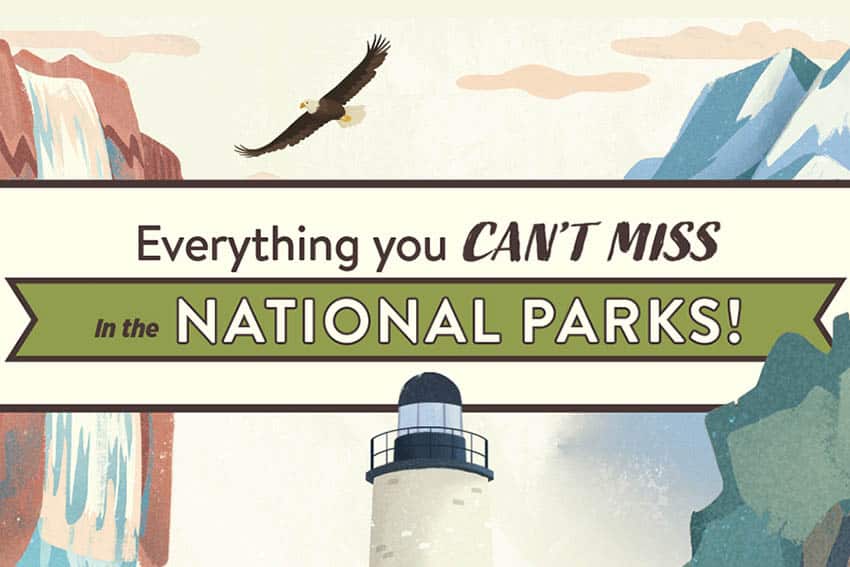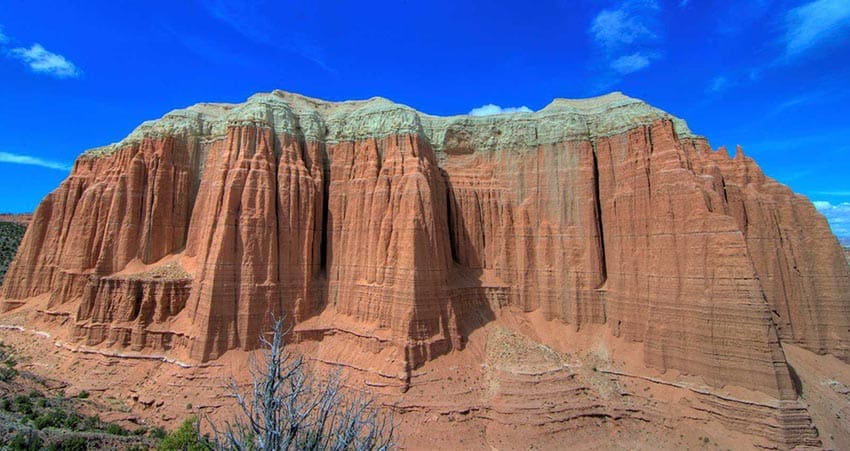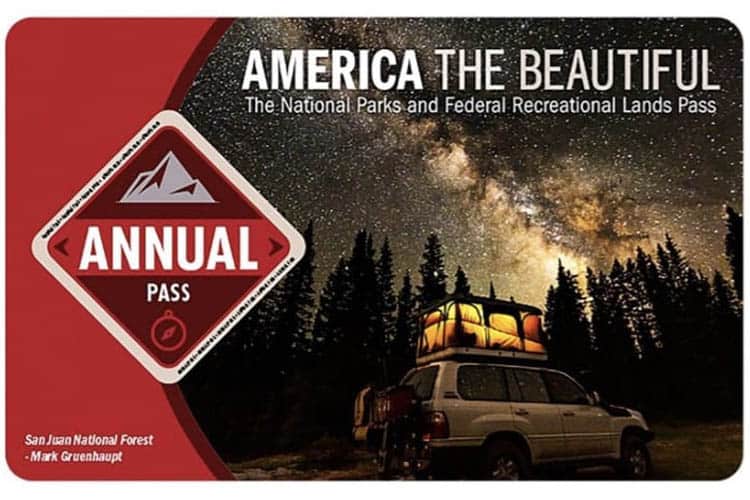
100 Things to See in the National Parks

Explore all the most interesting, important, and awe-inspiring sites in the US National Parks with this guide featuring:
100 must-see historical sites, natural landmarks, and other points of interest.
The US National Parks are full of amazing things to see from the incredible landscapes at the Grand Canyon to historical monuments like the Gateway Arch. But it can be easy to miss out on the best the parks have to offer if you don’t know where to look or what to look for.
100 Things to See in the National Parks gives you a clear guide through the most interesting, unique, and awe-inspiring things at each of the 63 national parks throughout the United States including:
- The highest peak in North America at the Denali National Park in Alaska
- The only place in the US where mail is delivered by mule at the Grand Canyon National Park in Arizona
- The largest living tree in the world at Sequoia National Park in California
Each point of interest has its own entry, where you’ll find background information on its appearance and history, as well as easy-to-follow instructions on how to find it. For national park fans of all ages and interests, this guide will help you explore the US National Parks like you’ve never experienced them before.
There are sixty-three national parks in the United States—spanning eighty-five million acres—and each has distinct qualities that have captured the hearts of visitors from all over the world. Every park has can’t-miss destinations— places that, if you left the park without seeing, you’d regret missing out.
100 Things Worth Seeing
100 Things to See in the National Parks is a collection of these celebrated landmarks, historical places, breathtaking natural settings, and fascinating points of interest found in America’s most treasured lands. While must-see lists are largely subjective, the locations highlighted here have astonished viewers for centuries and have served as sacred landmarks for millennia to native communities.
In these pages, you’ll learn about lesser-known spots as well, such as rare arctic sand dunes, colorful volcanoes decorated by endangered plants that glitter like jewels, and scenic byways that carve through the remote wilderness you might otherwise have never seen. This book will tell you how and where to find such spots—and will inspire you to want to go!

Excerpt Visiting Cathedral Valley, Wayne County Utah
Cathedral Valley is where solitude, spectacular scenery, and back-country bliss converge in a wild and remote wilderness ecosystem. This area is infrequently visited because it is a bit of an effort both to get to and to explore there—and that’s part of its allure.
The self-guided, fifty-eight-mile Cathedral Valley Driving Loop tour will bump you along the rocky roadway surrounded by bands of colorful bentonite hills that striate the landscape in rainbow hues.
Towering Sculpted Monoliths
In Upper and Lower Cathedral Valley, towering sculpted entrada sand-stone monoliths are among the area’s most captivating features, including the Walls of Jericho and Temple of the Sun, Temple of the Moon, and Temple of the Stars, which are especially beautiful places to catch the sunrise or sunset if overnighting in the primitive campgrounds. Other cool points of interest include Glass Mountain, Gypsum Sinkhole, and the historic Morrell Cabin.
Experiencing such wonder requires some preparation. Check for road closures in advance to learn if there are impassable areas. The Fremont River (which you’ll need to cross) has no bridge and may experience flooding. Snow and rain in winter, spring, and summer can wash out roads, making travel impossible for even the most souped-up vehicles.
Prepare for the unexpected and head in well-equipped. Emergency service may be hours or days away, and there is rarely cell reception. Bring emergency supplies, a spare tire, a shovel, food, and water (there is no potable water in this area of the park). Ask anyone who has explored there, and they’ll assure you that it is well worth the effort.
WHAT
A remote and rugged area with fascinating geology, eroded sandstone formations, and vast panoramic views.
WHERE
On the northwestern edge of the national park, in the North (Cathedral Valley) District.
WHEN TO VISIT
April, May, September, and October have the best weather at Capitol Reef. Summer temperatures soar, and winter temperatures plunge, making travel in the backcountry more of a challenge.
HOW TO GET THERE
Most visitors come from the Fruita Historic District fifty-eight miles south, traveling the eastern edge of the park boundary along Hartnett Road. You’ll need a high-clearance vehicle to make a small river crossing before entering the area. There are two other entrance points — northeast via Cathedral Road, and Polk Creek Road on the northwest side.

Stefanie Payne is a strategic communications professional supporting NASA human spaceflight at the agency’s headquarters in Washington, DC. When not telling the story of exploration in space, she writes about adventures on Earth—with articles and photographs appearing in The Travel Channel, blogs for The National Geographic Society, Thrillist, and The Lonely Planet.
100 Things to See in the National Parks
Excerpted from 100 THINGS TO SEE IN THE NATIONAL PARKS by Stefanie Payne. Copyright © 2022 by Simon & Schuster, Inc. Interior design by Colleen Cunningham. Interior illustrations by Alaya Howard. Interior images © Getty Images/Kateryna Novokhatnia; 123RF/Adrian Laschi. Used by permission of the publisher. All rights reserved.
- These 9 U.S. National Parks Require Reservations in 2024 - April 17, 2024
- Take a Hike in Olympic National Park - April 17, 2024
- The Wild Mississippi: 2340 Miles Across Ten States - April 8, 2024



